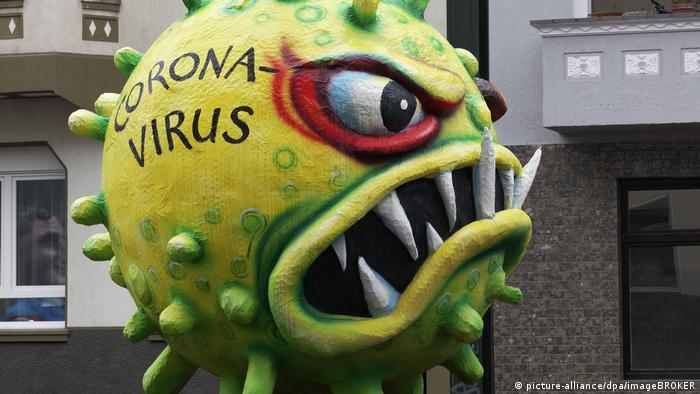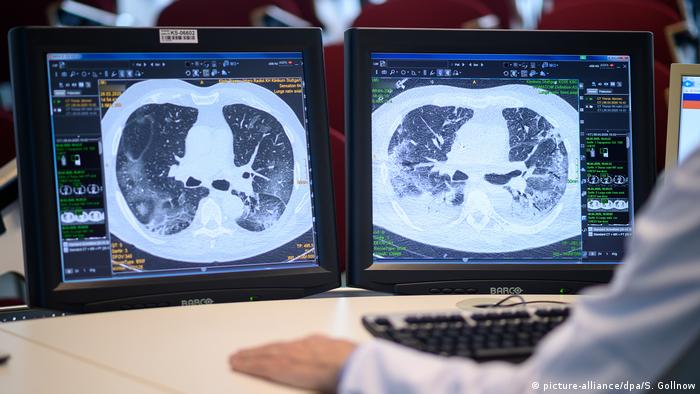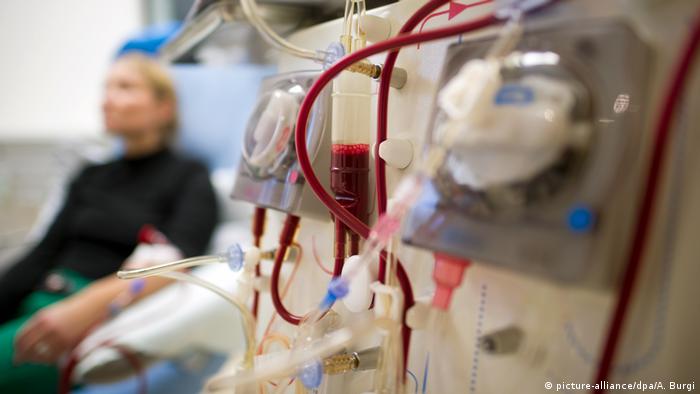COVID-19 is known primarily as a respiratory illness. However, the aggressive pathogen SARS-CoV-2 attacks not only the lungs but also the heart, nerves, brain, vessels, kidneys and skin

Of course, the lungs and airways are the main focus of attention with the COVID-19 respiratory disease. Since the new SARS-CoV-2 pathogen mainly attacks the lower respiratory tract, infected persons who experience a moderate or severe course of the disease have a dry cough, shortness of breath and/or pneumonia.
However, there are now numerous indications that the new coronavirus also attacks other organs on a massive scale and can severely affect the heart, blood vessels, nerves, brain, kidneys and skin.
Heart
Several studies and papers from countries including the US, China and Italy suggest that SARS-CoV-2 also attacks the heart. The evidence is based not only on the significantly higher mortality of COVID patients with cardiovascular diseases and high blood pressure: Several studies have also shown that patients with severe courses of the disease often had elevated blood biomarkers released by destroyed and dying heart muscle cells. In many previously healthy patients, the virus infection has been shown to cause myocarditis, or inflammation of the heart muscle.
Whether the new coronavirus SARS-CoV-2 itself causes this damage to the heart or — as seems more likely — the harm is done by the immune reactions triggered by the infection remains to be seen. However, acute heart damage has also occurred in the past in some SARS and MERS patients, and these SARS-CoV and MERS-CoV pathogens are very closely related to the current coronavirus SARS-CoV-2.
Lungs
During the COVID-19 disease, the lung is massively attacked, but the damage doesn't always stop there: Many recovered patients have presented partially reduced lung function as a late consequence. Chinese researchers have found a milky glass-like cloudiness in the lungs of some people who have recovered from COVID-19, which suggests permanent organ damage has occurred. Further investigations must now show whether the patients have developed pulmonary fibrosis, in which the connective tissue of the lung becomes inflamed.

A milky glass-like cloudiness in the lungs indicates permanent organ damage
This makes it harder for oxygen to reach the blood vessels, stiffens the lungs and makes breathing shallow and rapid. Respiratory disorders, shortness of breath and a dry, irritable cough are the consequences; physical performance decreases and even everyday activities become difficult.
Pulmonary fibrosis cannot be cured because the scarred changes in the lung tissue do not regress. But the progression of the condition can be delayed and sometimes even stopped if it is detected in time.
Vessels
During the autopsy of deceased COVID-19 patients, pathologists at the University Hospital of Zurich discovered that in some of them the entire cell layer on the inside of the blood and lymph vessels (endothelium) of various organs was inflamed.
The researchers concluded that the novel coronavirus SARS-CoV-2 leads to a generalized inflammation in the endothelium via ACE2 receptors. This could lead to severe microcirculatory disturbances that damage the heart and cause pulmonary embolism and vascular occlusion in the brain and intestinal tract. As a result, multiorgan failure occurs, which can often lead to death.
Nervous system
In more than 80% of COVD-19 patients, a disturbance of the senses of taste and smell is observed. Such ageusia or anosmia occurs at the very beginning of the infection, and COVID-19 can be diagnosed early on the basis of these symptoms. This is because in a normal flu-like infection, which is triggered by adenoviruses, the olfactory and taste disorders occur only at an advanced stage of the disease.

The olfactory nerve leads from the nasal mucosa through the skull bone directly into the brain
This seemingly banal observation shows, however, that in many patients the nervous system is also affected by the novel coronavirus SARS CoV-2. This is because the olfactory nerve leads from the nasal mucosa through the skull bone directly into the brain. Researchers from Belgium found out that the nerve cells serve as a gateway for the virus into the central nervous system.
Brain
The earlier coronavirus infections MERS and SARS already showed a similar penetration of the viruses via the nerves into the brain. When a patient in Japan infected with the new coronavirus showed signs of epileptic seizures, he was diagnosed with meningitis caused by the new coronavirus, which had penetrated the central nervous system.
Researchers from Japan and China therefore fear that in some people, the pathogen penetrates into the brain stem and damages the respiratory center there. This might explain why older COVID-19 patients, in particular, sometimes stop breathing without having previously experienced massive breathing problems due to the lung infection. It is still unclear whether SARS-CoV-2 also causes or promotes strokes.
Kidneys
If COVID-19 patients with pneumonia need to be ventilated, this can also damage the kidneys. Acute kidney failure often occurs. Because pneumonia often causes a lot of fluid to accumulate in the lungs, patients are given a drug that removes fluid from the body. However, this reduces the blood supply to the kidneys, and they can no longer fulfill their cleansing function.

In about 30% of COVID-19 patients, the kidneys are acutely impaired to such an extent that they require dialysis.
In addition, the blood coagulates faster in severe COVID-19 disease. As a result, blood clots can easily form, blocking the blood vessels and often also the kidneys. Small infarctions in the kidney tissue have been observed in numerous patients.
In about 30% of these patients, the kidneys are acutely restricted to such an extent that they require dialysis. It is not clear yet whether the kidneys heal after the patients recover or whether SARS-Cov-2 triggers long-term damage to the organs.
Skin
The novel coronavirus SARS CoV-2 also appears to cause visible damage to the largest organ of the human body, the skin. There are reports from several countries that COVID-19 patients showed significant skin lesions.
Small dermatological lesions on the feet have occurred particularly in children and young people. These purple patches resembled those caused by measles, chickenpox or chilblains. On the toes, the lesions usually resembled frostbite or formed reticular patterns, normally caused by blood clots in small blood vessels. Sometimes, however, marks, redness and hives-like rashes have also been observed on other parts of the body.
It is possible that the bluish discoloration of the skin is due to pathological blood clotting, which could also be caused by the novel coronavirus.

CORONAVIRUS AND THE ENVIRONMENT: 7 CHANGES TO EXPECT
Better air quality
As the world grinds to a halt, the sudden shutdown of most industrial activities has dramatically reduced air pollution levels. Satellite images have even revealed a clear drop in global levels of nitrogen dioxide (NO2), a gas which is primarily emitted from car engines and commercial manufacturing plants and is responsible for poor air quality in many major cities.
FOTOS HERE 1234567
Date 11.05.2020
Author Alexander Freund
Related Subjects Coronavirus
Keywords coronavirus, SARS-CoV-2, COVID-19, organs, lung, blood vessels, kidneys, nerves, brain, heart
Permalink https://p.dw.com/p/3c19Y
No comments:
Post a Comment